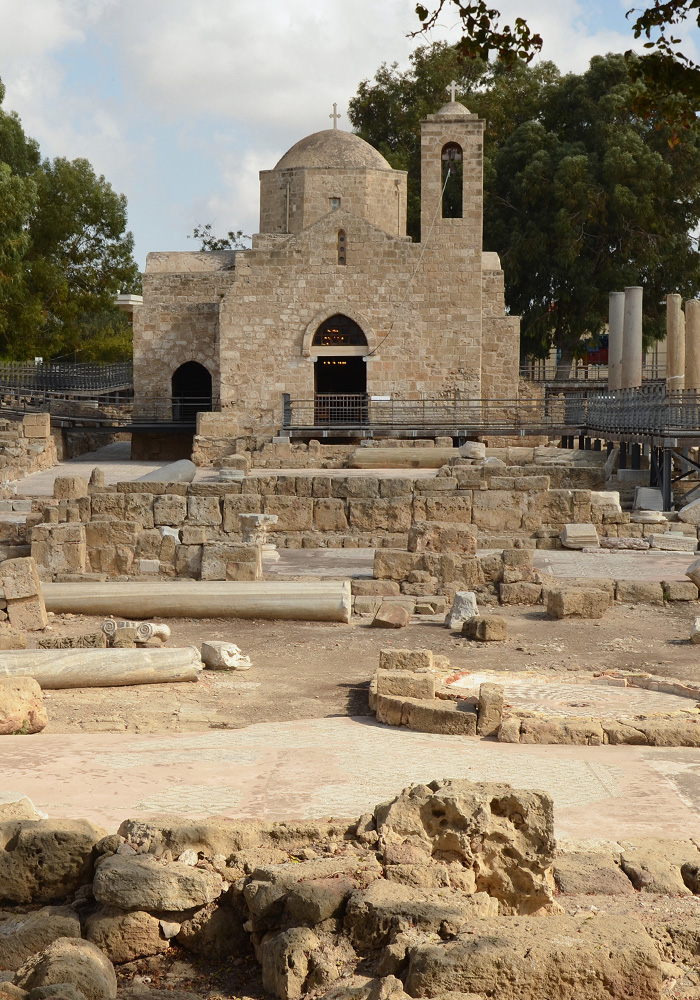The Basilica of Chrysopolitissa: A Testament to Early Christianity

The Basilica of Chrysopolitissa, also known as Panagia Chrysopolitissa, is one of Paphos’s most significant early Christian sites. Built in the 4th century AD, this basilica was one of the largest Christian structures on the island of Cyprus. Its historical and religious importance makes it a key attraction for those interested in early Christianity.
Historical Significance
The Basilica of Chrysopolitissa stands on the ruins of a Roman building, which highlights Paphos’s layered history. This site reflects the transition from Roman to early Christian influences. The basilica was designed with a grand layout, featuring multiple aisles and large open spaces to accommodate worshippers. The remains include impressive marble columns and extensive floor mosaics.
The mosaics are particularly noteworthy. They display intricate geometric patterns and Christian symbols, offering a glimpse into the artistic styles of the early Christian era. The craftsmanship of these mosaics showcases the blend of local and imported artistic influences that characterized early Christian art in Cyprus.
The Pillar of St. Paul
One of the most notable features of the Basilica of Chrysopolitissa is the Pillar of St. Paul. According to Christian tradition, this is the pillar to which St. Paul was tied and flogged by the Romans for preaching Christianity. This event is a significant part of Christian history and contributes to the basilica’s status as a pilgrimage site. The pillar serves as a powerful symbol of early Christian faith and endurance.
Exploring the Basilica Complex
In addition to the main basilica, the site includes the remains of a Byzantine church and a medieval monastery. These structures provide a comprehensive view of the religious evolution in Paphos. The Byzantine church, built several centuries after the basilica, continues the tradition of Christian worship in the area. The medieval monastery offers insights into monastic life during the Middle Ages.
The basilica complex is situated in a serene environment, away from the hustle and bustle of modern tourist areas. This peaceful setting allows visitors to reflect on the historical and spiritual significance of the site. Walking through the ruins, you can imagine the bustling activity that once characterized this important religious center.
Why You Should Visit the Basilica of Chrysopolitissa
Visiting the Basilica of Chrysopolitissa offers a unique opportunity to explore early Christian heritage in Paphos. The site’s rich history is visible in its architectural remains and artistic features. The mosaics provide a vivid connection to the past, while the Pillar of St. Paul adds a layer of profound religious significance.
The basilica’s additional structures, including the Byzantine church and medieval monastery, enhance your understanding of the site’s historical development. The serene atmosphere makes it a great destination for those seeking both historical insight and a peaceful retreat.
For history enthusiasts and spiritual seekers alike, the Basilica of Chrysopolitissa is a must-visit site. It stands as a testament to Paphos’s enduring Christian heritage and offers a window into the city’s rich past.
